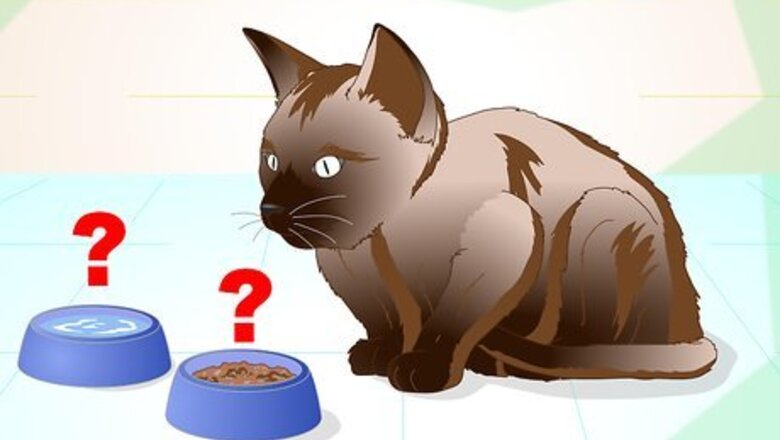
views
Recognizing Symptoms of a Broken Shoulder

Watch for signs that your cat is in pain. Pain is the first indication that something is wrong with your cat. Cats will try to hide their pain, but you can tell your cat is hurting if you know what to look for: Crying, howling, moaning or growling, particularly when touched Failure to eat Failure to groom Pale gums or rapid breathing (may indicate you cat is in shock)
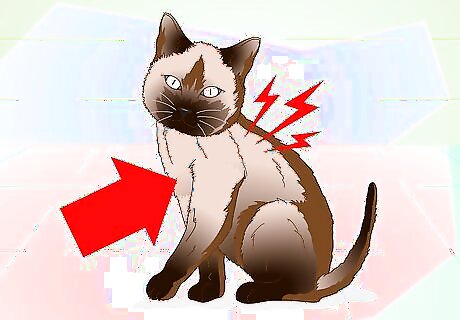
Look for signs of lameness. When your cat sits, stands, or walks, she transfers her weight from the forelimb up through the shoulder. A cat with a broken shoulder is going to be very lame because her weight pushes up through the fracture site as she walks. Look for: Limping Holding up the affected limb Abnormal movement
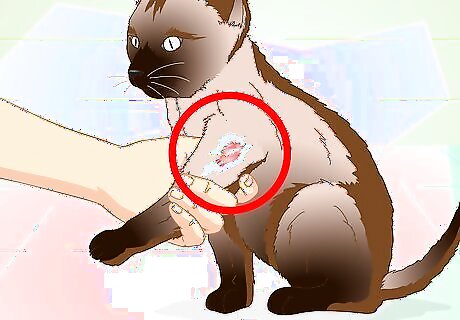
Examine the injured shoulder and limb. If you see bone sticking through the skin, your cat has suffered a compound fracture and should be taken to the vet immediately to prevent infection of the bone. Other signs of injury to look for are: Bruises or abrasions around the injured shoulder (especially common after a car collision) Scuffed nails (suggests trauma may have occurred) Swelling of the shoulder and leg Your cat holding her leg at a strange angle (may indicate a leg or shoulder injury)
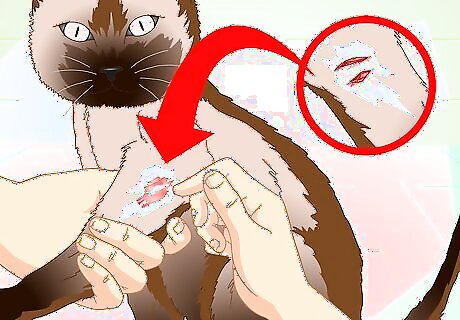
Check to be sure your cat has not been bitten. A bite to part of your cat’s leg can cause lameness and tissue swelling — similar symptoms to those that occur with a broken shoulder. Always check your cat for bite marks before determining that the shoulder is broken. If you find a bite wound, wash it with saline water and disinfect it before putting a bandage over it. Take your cat to the vet after you have found the bite mark.
Getting Your Cat to the Veterinarian
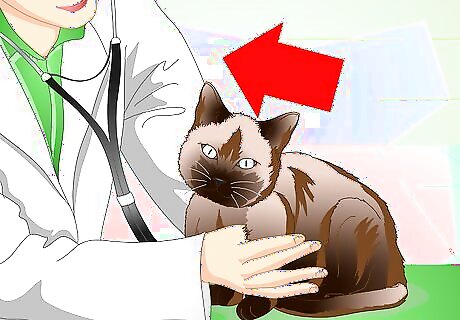
Take your cat to the vet as quickly as possible. Shoulder injuries need urgent attention. While not life-threatening, your cat will be in severe pain and need relief. A shock powerful enough to break bones may have caused other damage that is not immediately obvious, such as internal bleeding, which can be fatal. Most shoulder breaks will require surgery to repair and immobilize the joint. Your goal should be to stabilize your cat so that you can take her to the vet as soon as possible. Compound fractures require surgery within eight hours. If there is bone sticking out from your cat’s fur, then she has sustained a compound, or open, fracture. This is relatively rare. Most closed fractures should be treated within two to four days, but as shoulder fractures are rare without associated trauma, you should try to get your cat in sooner. Treatment will depend on where the fracture is located. If the joint is fractured, it will need to be repaired to prevent poor healing and early arthritis. This may be done with orthopedic wire, screws, or a combination of both. If the shoulder blade is fractured, then your cat may need only to rest for one to two months. If you cannot immediately take your cat to the vet, you should call to receive instructions.
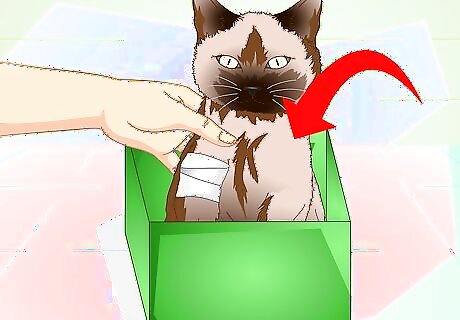
Place your cat in a box or crate to limit her movement until you can take her to the vet. Whether it is an open or closed fracture, movement will cause your cat pain and can aggravate the damage. You want to keep her as immobile as possible until you can get her to the vet.
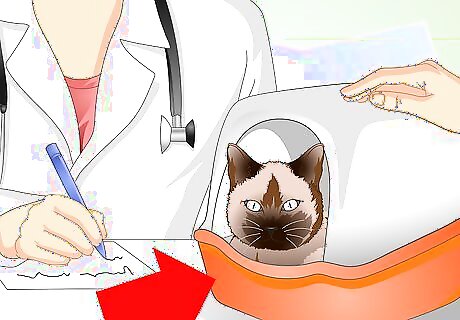
Keep your cat in the small box or carrier for the trip to the vet. Again, the goal is to keep your cat as immobile as possible. Put a towel in the box or carrier to help keep you cat comfortable during transport.
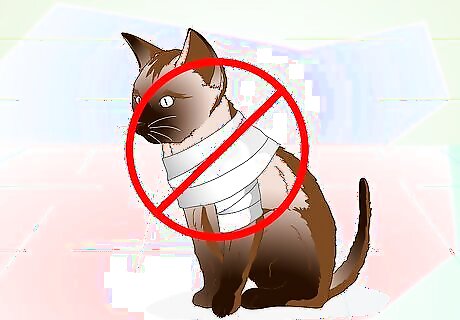
Do not attempt to bandage your cat’s shoulder. Dressing (covering with a clean cloth or gauze) is necessary for a compound fracture, but you should not try to bandage your cat’s shoulder in order to immobilize it, whether the fracture is open or closed. Immobilizing shoulders is very difficult, and your injured cat is unlikely to be in a cooperative mood. The struggles during bandaging will likely do more harm than any good the bandage might do.
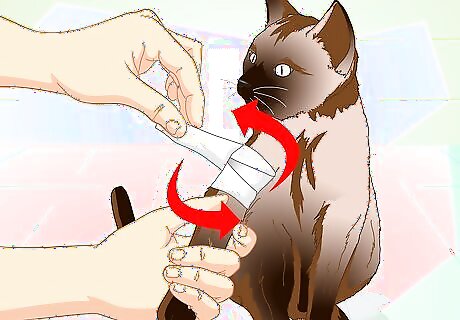
Dress your cat’s compound fracture with a clean bandage before taking her to the vet. In the unlikely event that your cat's shoulder has a compound fracture, the goal is to cover the exposed end of the bone to prevent infection, not to create a perfect bandage. You can loosely wind sterile gauze around your cat to cover the bone, or simply drape the gauze or a clean cloth over it. Try to disturb the bone as little as possible. Do not try to push the bone back under the skin. Take your cat to the vet immediately after covering the wound. The bone and wound will need to be sterilized, surgically realigned, and stitched up.
Caring for Your Cat after Surgery
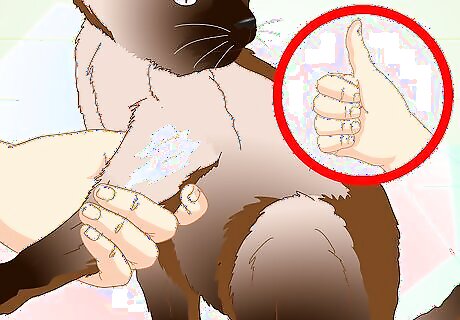
Make sure the wound is healing well. An infection at the surgical site can be more dangerous than the break itself. Even if your cat does not undergo surgery, you still need to pay careful attention to her. If she seems unusually tired, strangely agitated, or fails to eat or drink, contact your vet. Also call your vet within four to six hours if you find: Swelling of the limb or the surgical site A skin rash near the site of injury Leakage or a bad smell at the surgical site The bandage over the surgical site gets wet The bandage is slipping from its location
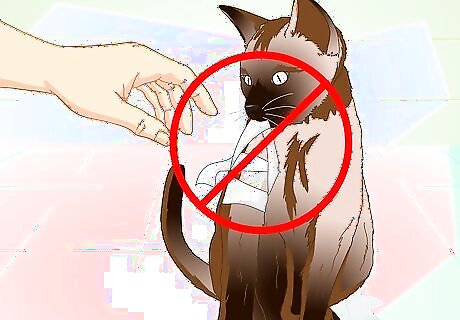
Check the surgical site daily to be sure your cat is not scratching or chewing at the sutures or bandage. Chewing or scratching at the wound may reopen or lead to infection. If your cat is disturbing the surgical site, talk to your vet about getting an Elizabethan collar (cone) to prevent her from reaching the area.
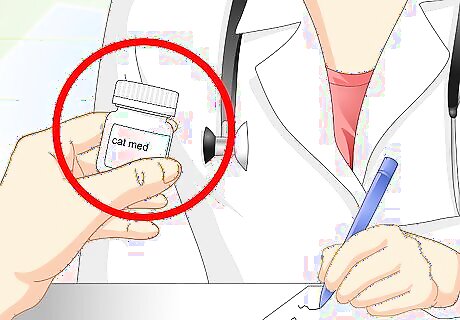
Give your cat vet-prescribed pain medications. Your vet will likely prescribe a non-steroidal anti-inflammatory drug like meloxicam to deal with your cat’s pain, as well as perhaps an opioid for the immediate post-surgery period. Give the drugs as prescribed. WARNING: Never give human drugs to your cat, as many, such as Tylenol, are toxic to cats and may prove fatal.
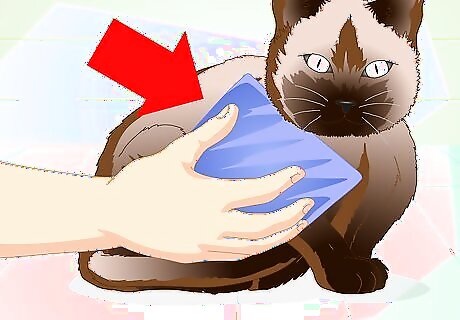
Use cold therapy to reduce swelling for the first week. Apply cold packs or bags of ice wrapped in cloth to the injured shoulder for the first week after the injury to reduce inflammation, swelling and pain.
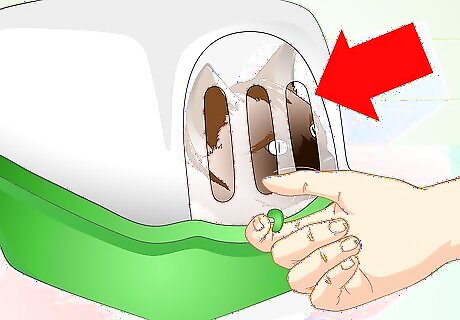
Confine your cat as directed. Usually, this means “cage rest” – confining your cat to a crate with food and litter until the bone heals. Most shoulder breaks will take at least eight weeks to heal, though young cats may heal more quickly. Your cat will likely need to be confined to cage rest for at least a month, and usually for the full eight weeks. To keep your cat entertained, giver her plenty of toys and the occasional low-calorie treat. You can also take her out of the cage for daily grooming. Your cat will want to leave the cage to walk around before the time is up. You will want to let her. Don’t. Letting your cat use her injured limb before it is fully healed can delay healing, cause re-injury, or lead to a permanent limp. Continue to confine your cat as directed until healing is confirmed by x-ray.
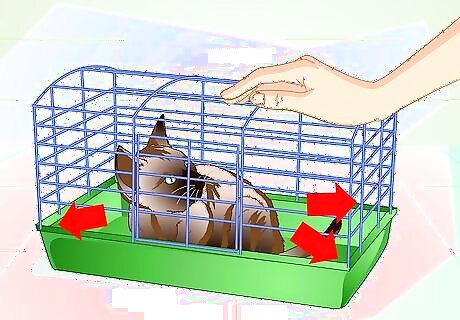
Buy an appropriately sized cage for your cat if cage rest is needed. The cage you choose should be large enough that you cat has three to four inches above her head, and should be three to four inches longer than the cat when she is stretched out to her full length. These measurements will help to keep your cat comfortable while she recovers. However, the cage must not be so large that you cat can walk around, as this would defeat the purpose of the cage. The cage should also have enough space for a small litter tray, as well as food and water bowls.
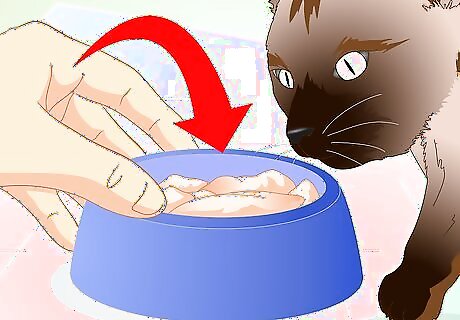
Change your cat’s diet. If your cat was sedated for surgery, you should feed her bland meat — fresh cooked chicken or white fish — for her next three meals. After that, choose tinned meats rich in protein to promote faster healing. Avoid jelly and gravy based cat foods, which are lower in protein, and which may upset your cat’s stomach. Also be sure to cut back the amount of food your cat gets each day to prevent weight gain during cage rest. Giving her the same amount of food may cause her to gain weight.
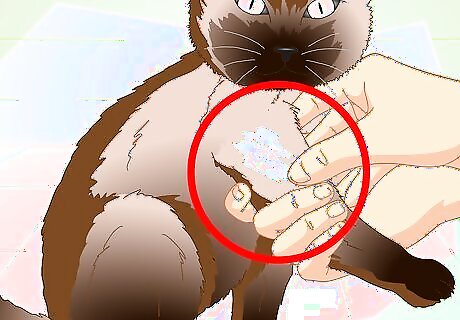
Perform physical therapy with your cat. If your cat does not use her injured limb for several weeks, the muscles will atrophy and healing will be delayed. To optimize recovery, your cat will need physical therapy both with a veterinary therapist and at home. Some exercises you can do at home include: Range of motion therapy — For the first month after injury, you will want to flex and extend the joints of the injured leg to maintain joint health. Ask your vet to show you how. The goal is to exercise the joint without pain, so at first, these movements will be small. As your cat heals, you will be able to move the injured limb more and more. Massage therapy — After the first week, when most of the inflammation has subsided, massage the skin and muscles around the injured bone to prevent the build-up of scar tissue and to reduce pain. Your vet will recommend how frequently to massage your cat.
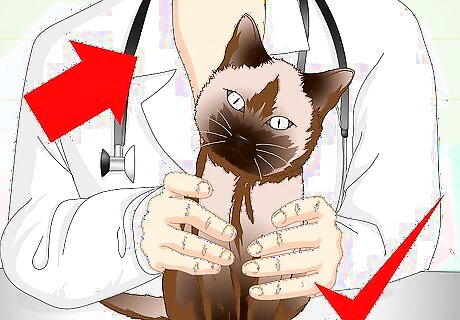
Attend all scheduled follow-up appointments with your vet. If your cat has had surgery, the vet may need to remove the sutures. At the very least, he or she will want to take x-rays to assess healing so that you will know when your cat can safely return to normal activities.


















Comments
0 comment